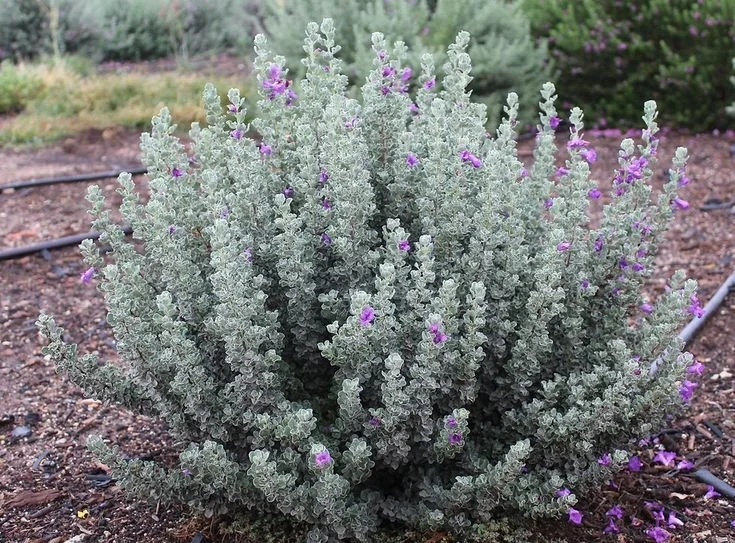Texas Sage Shrubs: Resilient Beauty for Southern Landscapes
Texas sage shrubs (Leucophyllum frutescens)
At Professional Landscape Design, we often recommend Texas Sage shrubs (Leucophyllum frutescens) for clients seeking hardy, low-maintenance plants that thrive in heat and drought. Also known as cenizo or barometer bush, this native evergreen dazzles with silvery foliage and bursts of purple, pink, or white blooms—often triggered by rain or humidity shifts. With a naturally rounded form and mature size ranging from 3 to 8 feet tall, Texas sage is ideal for hedges, accent plantings, and commercial landscape designs.
Growth Rate & Care
Texas sage flourishes in full sun—at least 6 to 8 hours daily—and prefers well-drained, alkaline soil. It tolerates rocky or loamy soils and resents soggy conditions. Once established, it’s extremely drought-tolerant, needing only occasional deep watering during prolonged dry spells. Overwatering can lead to root rot, so let the soil dry out between waterings. Raised beds or containers with drainage holes are great options in wetter regions.
Minimal pruning is needed to maintain Texas sage’s natural shape. In late winter or early spring, lightly trim old branches and pinch back tips to encourage bushier growth. Avoid heavy shearing, which can cause thinning and reduce bloom production. For leggy plants, rejuvenation pruning—cutting back to 12–18 inches—can restore fullness. Fertilizer is rarely necessary, though a slow-release feed in early spring may boost vigor.
Texas sage attracts pollinators like butterflies, hummingbirds, and bees, while its aromatic foliage deters deer and rabbits. It’s generally pest-free, though spider mites or aphids may appear in stressed conditions. Good airflow, proper watering, and full sun help prevent fungal issues like powdery mildew or cotton root rot. Space plants 4–6 feet apart to allow for mature growth and airflow.
Texas ‘Silverado’ Sage, Pollinator-Attractor
Landscape Design
Popular cultivars include ‘Silverado’ with fuchsia blooms on silver foliage, ‘Green Cloud’ with magenta flowers and green leaves, and compact types like ‘Microburst’ for small spaces. Use Texas sage as a foundation plant, informal hedge, or container specimen. Its silvery leaves pair beautifully with agave, prickly pear, or muhly grass for a striking Southwestern palette, or you can plant them next to Elephant Ears, Hibiscus, and ferns for tropical-themed landscaping beds. Whatever you’re envisioning, Professional Landscape Design has you covered.

